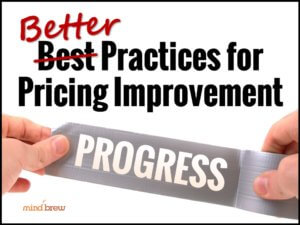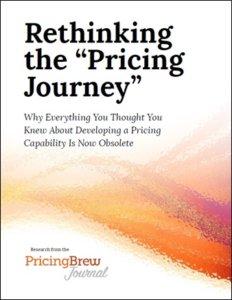You probably think you know how to tie your shoes.
You’re probably wrong.
You see, the way most of us learned how to tie our shoes is neither the strongest nor the fastest way to get the job done. Fortunately, through the wonder of the Internet, you can learn how to tie a strong knot that is less likely to come undone and/or an Ian knot, which is faster to tie and results in less wear on your laces.
Both options require a very small change to the method you learned as a child. Neither option requires any more effort than the standard method. And both are demonstrably better than the shoelace knot you learned as a kid.
So why have you never tried one of these knots before?
It’s really easy to get stuck doing things the way you’ve always done them — whether you are talking about tying your shoes or pricing. Most of us never even realized there was another way to tie our shoes. And if you did know, you might have assumed the change wasn’t worth the effort.
But sometimes making a small change can have outsized benefits.
The most obvious example from the pricing world is one you’ve undoubtedly already heard: It’s possible for a 1% change in price to result in a 10% change in profits. But you might not be aware of some of the other small changes that can result in dramatic benefits to pricing, revenues, and margins. Fortunately, we have several resources that outline easy ways to achieve big improvements:
- Identifying and Capturing Profitable ‘Quick Wins’ offers 15 different low-effort, high-yield pricing improvements. They include adjusting price references, scrubbing your item master for out-of-date costs, implementing surcharges for rush or small-volume orders, not rounding prices, and many other easy-to-implement ideas for improving pricing.
- There’s More to Profit Than Price examines five levers adjacent to pricing that can affect profitability: customer lifetime value, customer retention, customer mix, portfolio spend, and cost-to-serve and substitutions.
- ‘Better’ Practices for Pricing Improvement demonstrates how to adapt best practices to less-than-ideal circumstances and explains how to assess your particular situation to find small, achievable initiatives that will impact your bottom line.
- Using a Cost-Plus Mindset to Your Advantage offers a case study in creative problem-solving. In this case, a couple of days’ work (and a little subterfuge) took a company from scrambling to break even to consistently profitable.
We often find that the most successful B2B pricing teams are those that intentionally look for and implement small changes like those covered in these resources. To use a familiar cliché, they are working smarter, not harder. And when you add a lot of these small, incremental changes together, you get real, lasting benefit.
The first time I saw the strong knot, I was skeptical that such small change could actually prevent my shoes from coming untied. But having used it for a while, I can confirm that this tiny little change really does make a big difference. Give some of the small pricing changes a chance too. You’ll be surprised how much you can accomplish with relatively little effort.

















